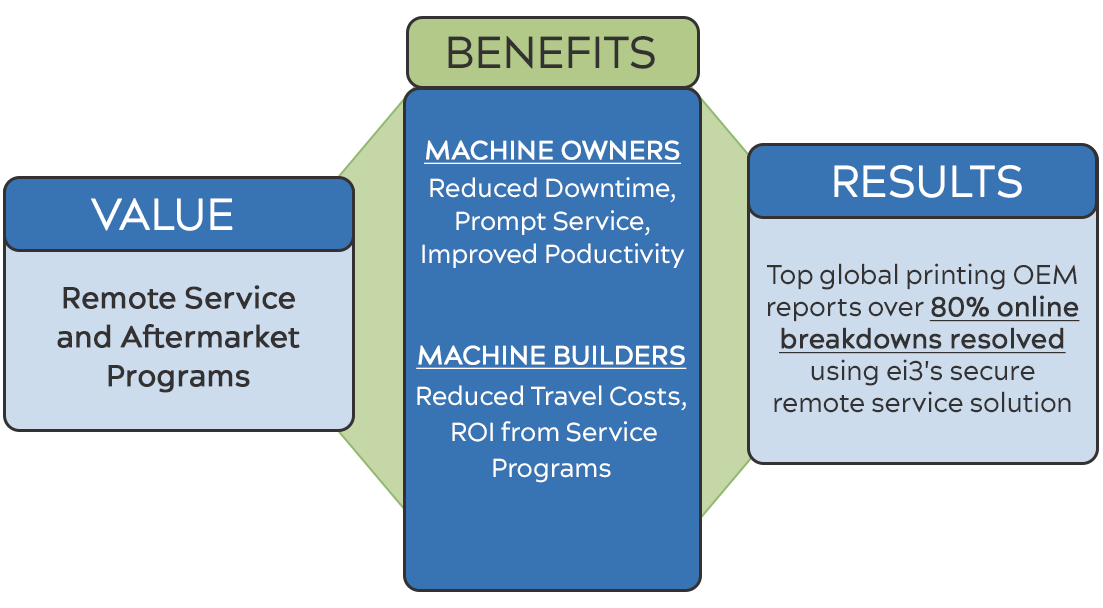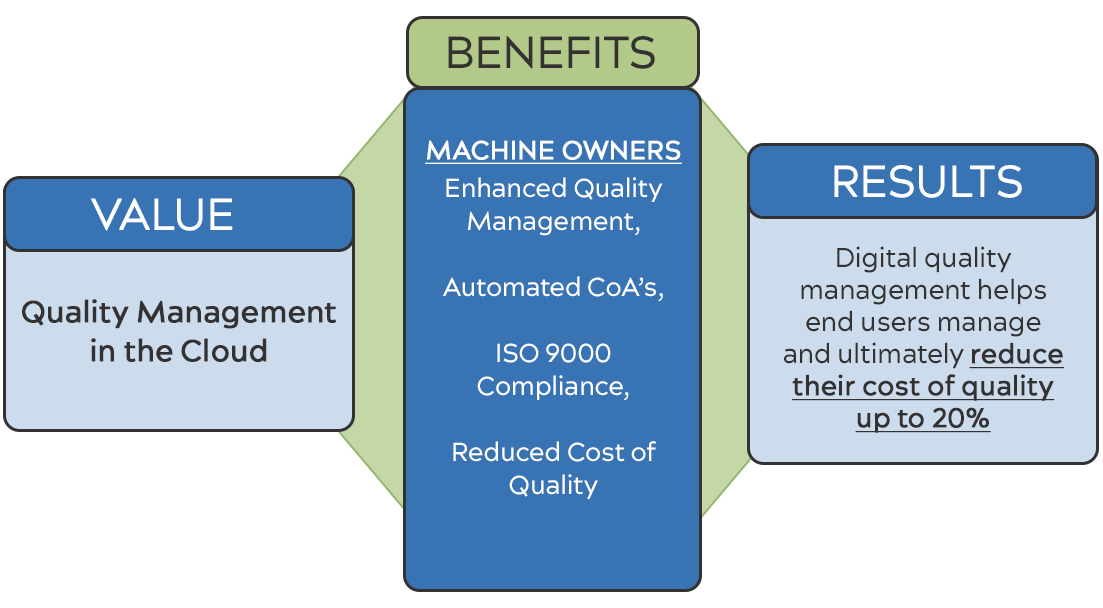THE TOP 4 VALUES
OF MACHINE IIoT
Top 4 Values of Machine IIoT
Machine Owner's Viewpoint
Understanding the scope and benefits of IIoT solutions can be challenging amidst its overwhelming buzz. This whitepaper highlights the four key values of IIoT: It enables proactive machine maintenance through remote service, maximizes operational efficiency by applying Lean Six Sigma principle, improves quality control and cuts quality costs, and helps save energy.
This white paper outlines four clear value drivers of IIoT for machine owners, translating concepts into tangible, achievable results:
Download the Whitepaper
SERVICE & AFTERMARKET PROGRAMS
The first value lies in IIoT-enabled secure remote service and aftermarket programs, ensuring optimal machine maintenance and prolonged lifespan. With remote service and monitoring capabilities, technicians can use real-time data insights to efficiently address machine issues remotely.

Machine builders can use predictive alerts to drive replacement programs and advance aftermarket service business models, resulting in reduced unplanned machine downtime and associated collateral costs. This benefits machine owners through increased machine productivity, operational efficiency, and swift service. Machine builders reduce warranty costs, save on technician travel time and costs, and achieve a return on investment through service program revenues. To illustrate this example, a global printing machinery OEM recently reported at an industry forum that by using ei3’s secure remote service solution, over 80% of breakdown situations can be resolved online.
INCREASE IN MACHINE UTILIZATION
Applying Six Sigma for enhanced production performance requires effectively measuring and using KPIs, often sourced from machine builders. IIoT offers cloud-based data services for sharing this knowledge with machine owners, who can then focus on their manufacturing strengths without in-house IT investments.

Cloud-based KPIs drive improvement initiatives, predict failures, and facilitate equipment design and engineering enhancements for improved machine performance and higher OEE. These metrics also enable performance benchmarking, allowing machine owners to optimize operational settings and compare their machines to industry standards. Research indicates a 10 to 15% increase in OEE in the first year, translating to a 50% increase in Return on Assets (ROA) with the utilization of cloud-based KPI’s.
QUALITY MANAGEMENT IN THE CLOUD
IIoT enables efficient production quality control. IoT applications can track, monitor and analyze important aspects of machine performance, ensuring high-quality production. By comparing real-time values with defined limits, advanced machine learning algorithms define the best settings and issue alerts for better control.

This approach optimizes production quality management, empowering operators to proactively address deviations. It generates Certificates of Analysis (CoAs), essential for meeting ISO 9000 standards and promoting a continuous improvement in quality assurance. The implementation of digital quality management has been shown to reduce the cost of quality by 20%.
ENERGY & RESOURCE SAVINGS
IoT is instrumental in monitoring the sustainability of manufacturing operations. IoT applications enable measurement, analysis, and tracking of energy usage. This allows machine owners to compare energy utilization patterns across various machines and production lines.

These actions encourage machine owners to evaluate and optimize resource utilization, and derive predictive insights to identify irregular consumption patterns, leading to accurate usage models. ei3 customers have achieved an average 4% reduction in energy consumption through the use of predictive analysis. This application assists manufacturers in improving productivity and achieving energy savings, in line with the ISO 50001 standard for energy management.

